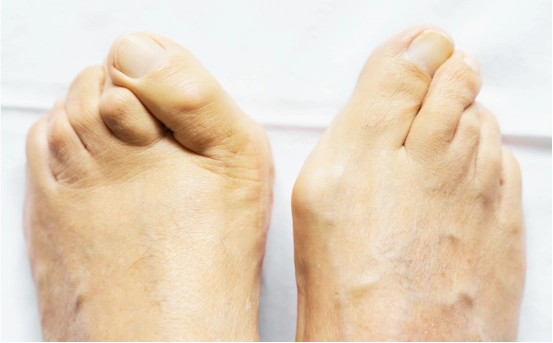Treatment of ureteral reimplantation is a specialized surgical procedure aimed at correcting issues with the ureters the tubes that carry urine from the kidneys to the bladder. This treatment is often necessary in cases of vesicoureteral reflux (VUR), ureteral obstruction, or ureteral injury.
he human urinary system plays a vital role in eliminating waste and maintaining fluid balance in the body. At the core of this system are the ureters two thin, muscular tubes that transport urine from the kidneys to the bladder. When these tubes don’t function properly due to structural abnormalities, blockages, or reflux, it can lead to serious medical issues such as recurrent urinary tract infections, kidney damage, and chronic pain. One of the most effective surgical treatments for correcting such problems is ureteral reimplantation.
What Is Ureteral Reimplantation?
Ureteral reimplantation is a surgery that involves repositioning one or both ureters into the bladder to ensure proper urine flow and prevent backflow or obstruction. The procedure is commonly performed in children with congenital VUR, but it can also be necessary in adults due to trauma, previous surgeries, or tumors that have damaged the ureter.
Medical Conditions Treated by Ureteral Reimplantation
-
Vesicoureteral reflux (VUR) :- A condition where urine flows backward from the bladder to the kidneys, risking infection and kidney damage.
-
Ureteral obstruction or stricture :- Narrowing or blockage in the ureter causing difficulty in urine drainage.
-
Ureteral injury :- Caused by previous surgeries, trauma, or invasive pelvic procedures.
-
Ectopic ureter :- A condition where the ureter doesn’t connect properly to the bladder.
When Is Ureteral Reimplantation Recommended?
A urologist may recommend ureteral reimplantation when :-
-
Antibiotic management for VUR fails
-
Recurrent urinary tract infections (UTIs) occur despite medical therapy
-
Ureteral obstruction causes hydronephrosis (swelling of kidneys)
-
A ureter is damaged or blocked due to surgical complications or stones
Types of Ureteral Reimplantation Procedures
Several surgical techniques are used to perform ureteral reimplantation, depending on the underlying condition, patient age, and severity. The two primary types are :-
Open Ureteral Reimplantation
This is the traditional approach, often used in children. The surgeon makes an incision in the lower abdomen and repositions the ureter to a new location in the bladder, ensuring a one-way valve mechanism to prevent urine reflux.
Advantages :-
-
High success rate (over 95%)
-
Permanent correction of VUR or obstruction
Disadvantages :-
-
Requires hospital stay
-
Larger incision and longer recovery time
Minimally Invasive (Laparoscopic or Robotic) Ureteral Reimplantation
This approach involves small incisions and the use of a laparoscope or robotic instruments. It is gaining popularity due to less pain and faster recovery.
Advantages :-
-
Less post-operative pain
-
Shorter hospital stay
-
Quicker return to normal activities
Disadvantages :-
-
Technically more complex
-
Limited availability in some centers
The Surgical Procedure: What to Expect?
Preoperative Preparation
Before surgery, patients undergo :-
-
Imaging studies like voiding cystourethrogram (VCUG) or renal ultrasound
-
Blood and urine tests
-
Anesthesia evaluation
Doctors also explain risks, benefits, and expected outcomes to the patient or their family.
During Surgery
-
General anesthesia is administered
-
An incision is made (either open or laparoscopic)
-
The ureter is detached from its abnormal position
-
It is then tunneled through the bladder wall and reattached at the correct angle to form a valve-like function
-
The bladder is closed, and a catheter is usually placed
Duration :-
The procedure typically lasts between 2 to 3 hours.
Recovery After Ureteral Reimplantation
Hospital Stay :- Most patients stay in the hospital for 1 to 3 days, depending on the type of surgery performed and their overall health.
Pain Management :- Pain is managed using oral or IV medications. Discomfort gradually subsides within a few days.
Postoperative Care
-
A catheter may be in place for several days to drain urine
-
Patients are advised to avoid strenuous activity for a few weeks
-
Follow-up imaging may be required to assess ureter function
Return to Normal Activities
-
Children can usually return to school within 1-2 weeks
-
Adults can resume work depending on the nature of their job
Risks and Complications
Although ureteral reimplantation has a high success rate, potential complications include :-
-
Urinary tract infections (short-term)
-
Blood in the urine
-
Urinary leakage or incontinence
-
Ureteral obstruction at the new junction
-
Bladder spasms or urgency
-
Rarely, failure of the surgery requiring revision
Success Rates of Ureteral Reimplantation
Ureteral reimplantation boasts excellent outcomes. Studies show success rates of 95-98% in eliminating reflux and restoring normal urine flow. Long-term kidney function is typically preserved, and patients experience a significant reduction in UTIs and related complications.
Success Depends On :-
-
Age and health of the patient
-
Underlying diagnosis
-
Surgical technique used
-
Experience of the surgeon
Ureteral Reimplantation in Children vs. Adults
While the core procedure is similar, there are differences :-
-
Children :- Often treated for congenital VUR; surgery is straightforward and highly successful.
-
Adults :- May need surgery for injury, cancer, or strictures; the complexity can be higher, especially if performed after radiation or pelvic surgery.
Alternatives to Ureteral Reimplantation
In select cases, less invasive options may be considered before surgery :-
- Antibiotic Prophylaxis :- Used especially in mild cases of VUR in children to prevent infections while monitoring for spontaneous resolution.
- Endoscopic Injection (Deflux) :- Involves injecting a bulking agent to prevent reflux. This is a temporary solution and less effective than surgery in severe cases.
- Stent Placement :- A stent may temporarily relieve ureteral obstruction but is not a permanent fix.
Choosing the Right Hospital and Surgeon
If you or your child needs ureteral reimplantation, it’s crucial to select a healthcare provider with :-
-
Board-certified urologists or pediatric urologists
-
Advanced surgical facilities, including robotic systems
-
Access to diagnostic imaging and postoperative care
-
High patient satisfaction and outcome success rates
Conclusion
Ureteral reimplantation is a safe and effective treatment for conditions like vesicoureteral reflux, ureteral obstruction, or injury. Whether done through open or minimally invasive surgery, the procedure helps restore normal urine flow, prevent kidney damage, and drastically reduce the risk of infections. With proper care, most patients recover well and lead healthy lives post-surgery.























